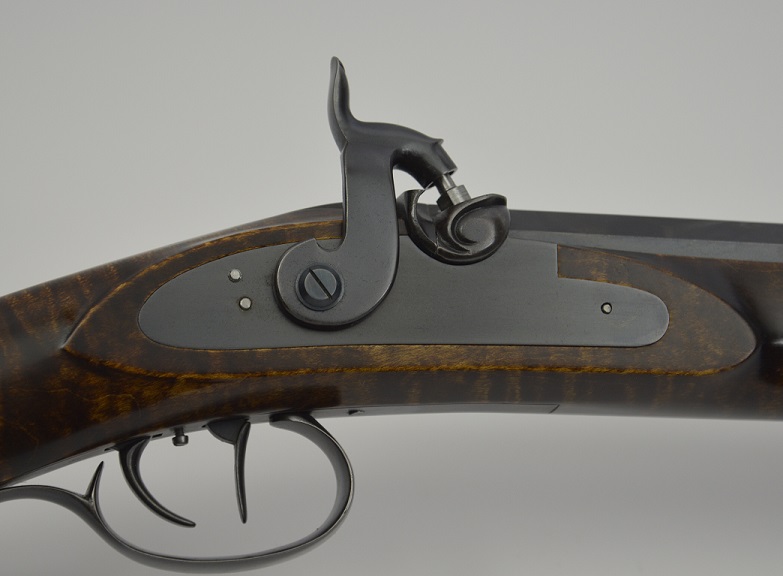
The flintlock ignition system came into use during the 1600’s. It consists of a sharp flint held firmly in the jaws of the cock. When the trigger is pulled the cock is released to move forward and down, the sharp edge of the flint scrapes the steel frizzen, simultaneously opening the pan and throwing a shower of hot sparks into the priming charge. The hot gases from the burning priming charge travel through a small flash hole drilled through the side of the barrel to ignite the main powder charge.
The percussion cap ignition system was developed around 1818. The percussion cap contains a small amount of fulminate of mercury. This cap is placed on the nipple and when struck by the hammer the fulminate of mercury explodes sending a hot flame into the powder charge inside the barrel. The percussion cap offers some advantages over the flintlock. It is more restraint to weather, can be faster to load, and because it generates a hotter flame than a flintlock can it offers more reliable ignition with powder of questionable quality or substitute black powder.

This style percussion lock utilizes a drum which is a hollow, threaded tube. The drum is threaded into a hole drilled and tapped into the side flat of the barrel. The nipple is threaded into the drum. This creates a channel from the nipple to the powder charge inside the barrel. The flame created by the cap passes through this channel to ignite the powder charge.
The drum system allows easy conversion of flintlocks to the percussion system simply by drilling and tapping the vent hole in the barrel to accept the drum, removing the firzzen and pan from the lock and changing the cock for a hammer. Many flintlocks were converted to percussion using this method. Nathaniel Wyeth noted in his journal that in December, 1834 they had converted 3 flintlock rifles to percussion because the condition of their powder was such that the flintlocks would not ignite it.
Here is an example of the patent breach percussion system. The channel from the nipple to the powder charge is contained in the breach plug that threads into the end of the barrel. The face of the breach is not flat as most flintlocks were. It has a chamber, smaller in diameter than the barrels bore, connected at right angle to the channel leading to the nipple. A portion of the powder charge will fill this chamber in the breach where it is exposed to the flame from the exploding cap.

Percussion caps were readily available in St. Louis by 1830. Prior to 1826 all trappers and mountain men were armed with flintlocks. Percussion firearms did make their way into the mountains but not all the mountain men were quick to adopt their use.
